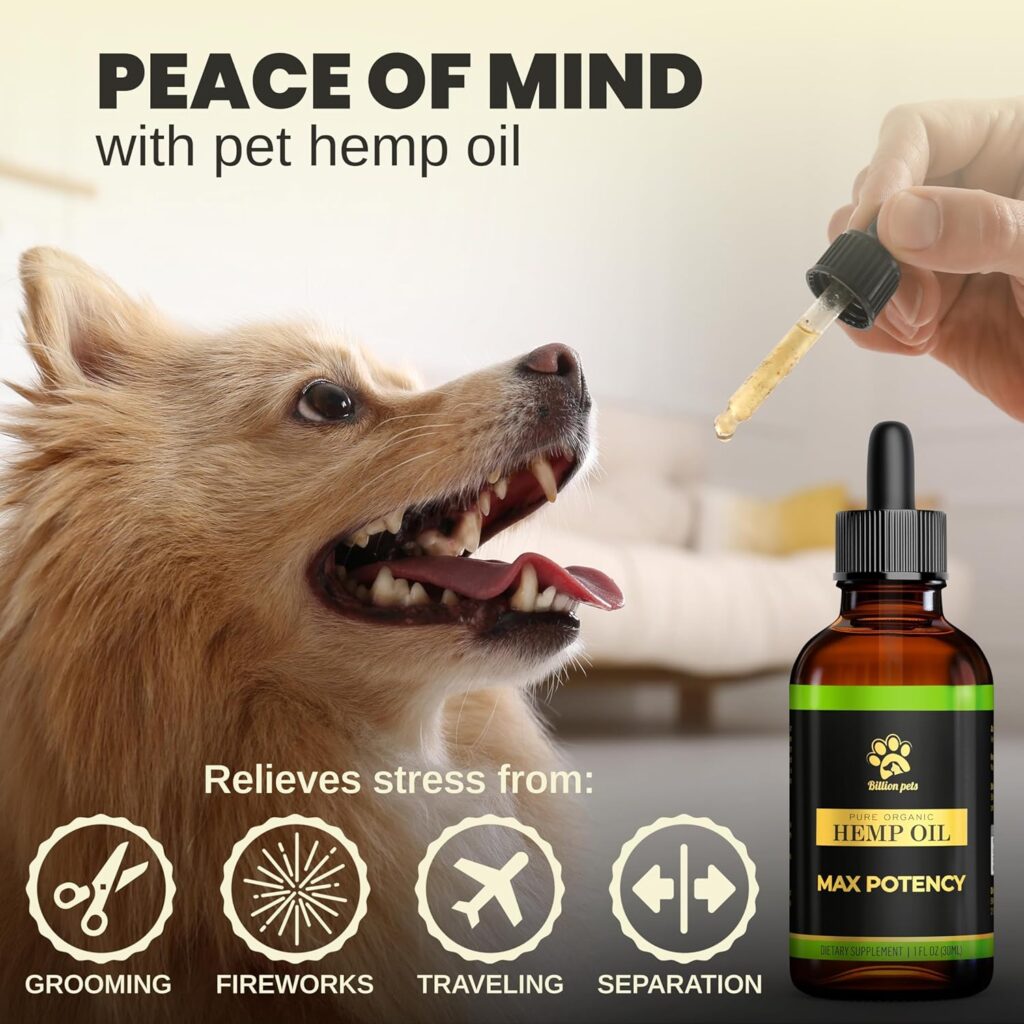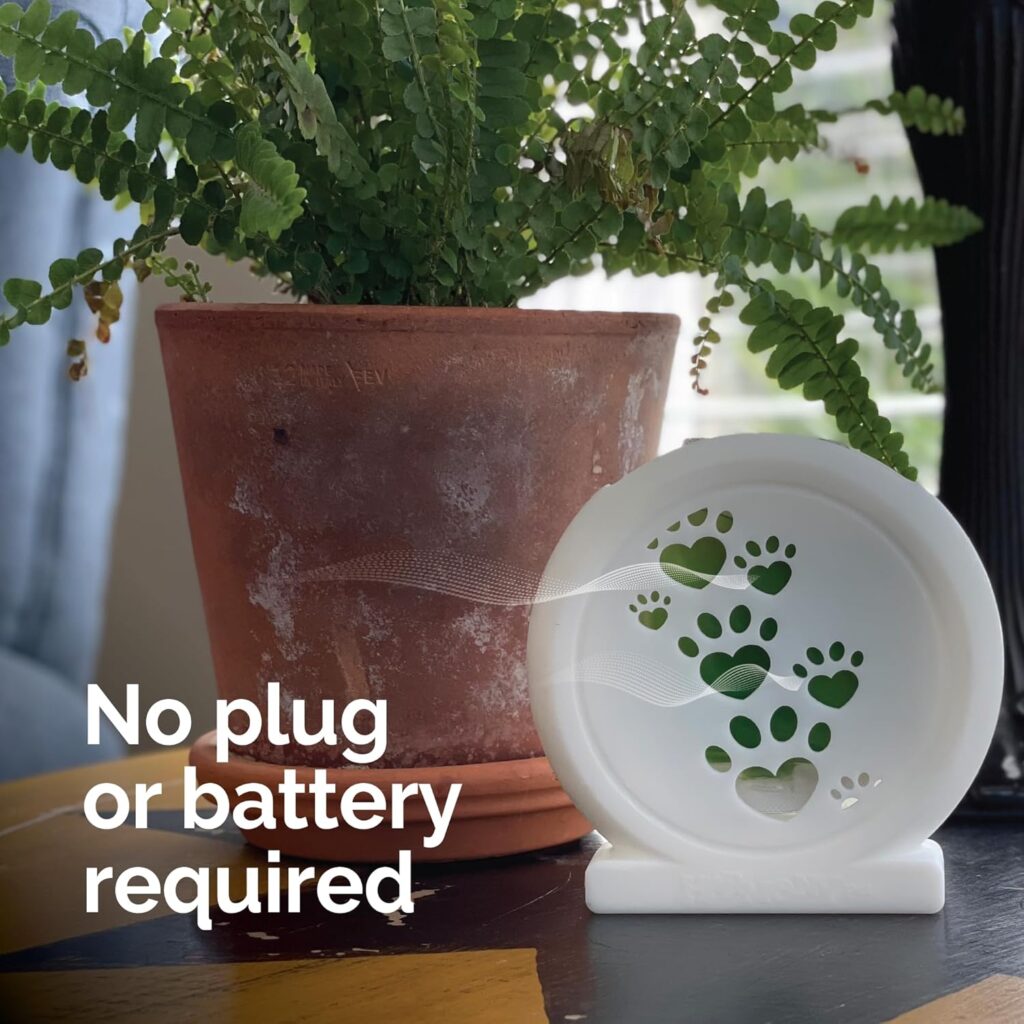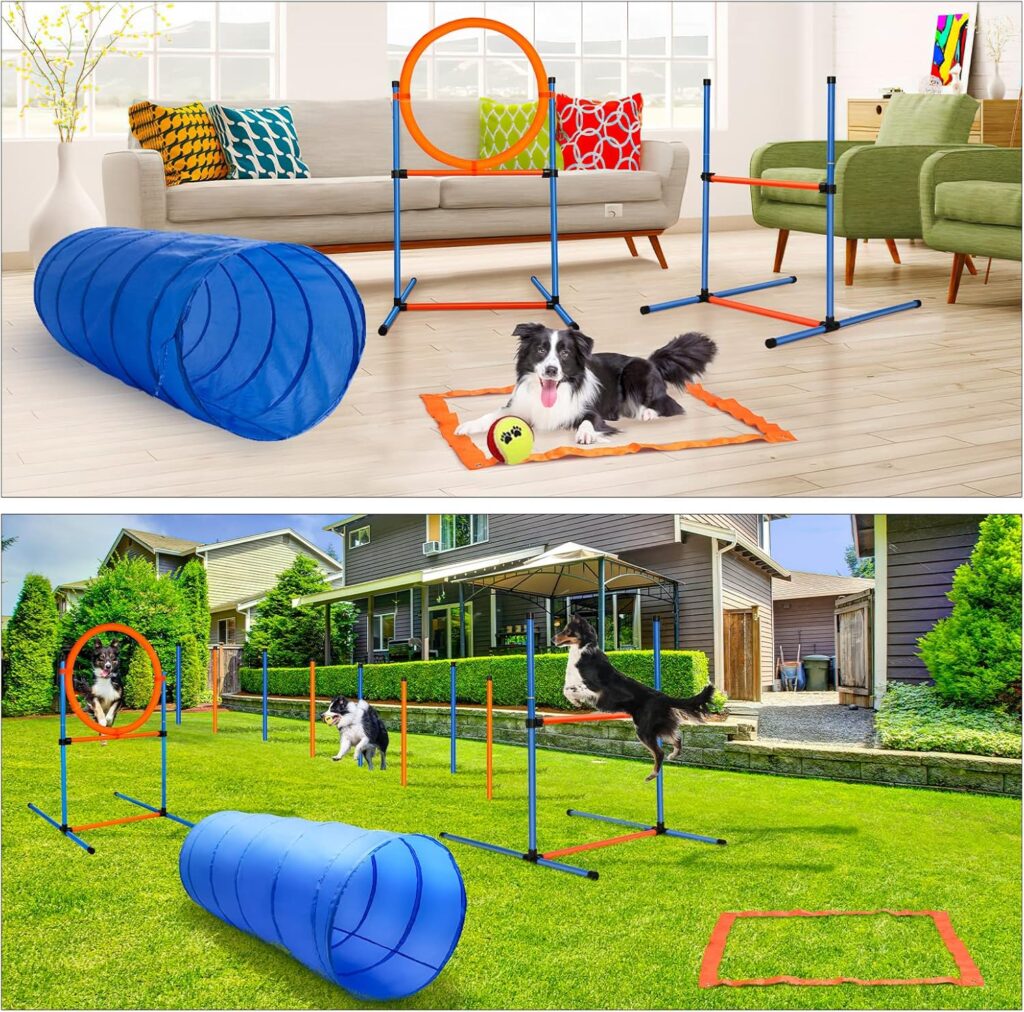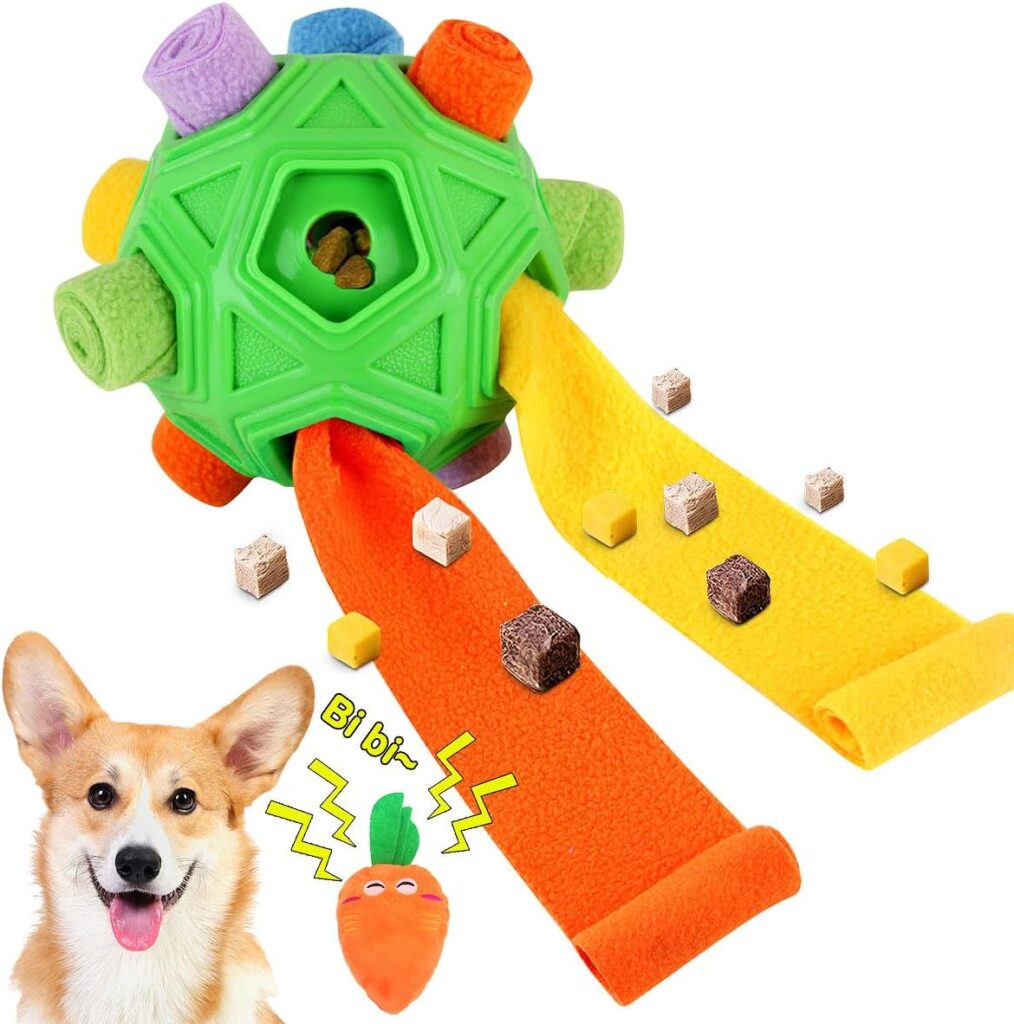As an Amazon Associate, I earn commission from qualifying purchases.
Separation anxiety in dogs can be incredibly distressing for both pets and their owners. As someone who has dealt with this issue firsthand, I know the stress and frustration it can cause.
But there’s hope!
Natural methods can be remarkably effective in helping our furry friends cope with being alone.
The goal of treating separation anxiety naturally is to create a calm, confident dog who feels secure even when you’re not around. This involves a combination of environmental management, behavior modification, and natural remedies that work together to soothe your dog’s anxious mind and body.
To tackle separation anxiety, we need to consider your dog’s emotional needs, their daily routine, the setup of your home, and even your own behavior. This holistic approach addresses the root causes of anxiety as opposed to just masking the symptoms.
Let’s explore the key concepts of natural separation anxiety treatment:
Understanding Canine Anxiety
Separation anxiety stems from a dog’s instinctual need for companionship combined with a lack of confidence when alone. In the wild, being separated from the pack can be dangerous, so it’s natural for dogs to feel uneasy when left by themselves.
The first step in treatment is recognizing the signs of separation anxiety. These can include:
- Excessive barking or howling
- Destructive behavior
- Inappropriate elimination
- Pacing
- Attempts to escape
It’s crucial to differentiate true separation anxiety from boredom or lack of training. A thorough assessment of your dog’s behavior patterns will help decide the best course of action.
Creating a Calm Environment
One of the most effective natural treatments is to create a safe, soothing space for your dog. This involves designating a specific room or area in your home as your dog’s “den.” Use comfortable bedding (like this Bedsure Orthopedic Dog Sofa on Amazon), provide favorite toys, and consider using white noise or calming music to mask outside sounds that might trigger anxiety.
Setting Up a Safe Space
- Choose a quiet area of your home, away from windows and doors if possible.
- Provide a comfortable bed or crate lined with soft blankets.
- Include familiar toys and items that smell like you.
- Use blackout curtains or shades to reduce visual stimuli.
- Consider a white noise machine or soft background music to mask outside noises.
Check out the Sound Oasis Pet Bluetooth Sound Machine on Amazon. It has 20 doctor developed calming sounds to soothe, relax, and help with separation anxiety.
Pheromone Therapy
Pheromone therapy can be incredibly helpful in creating a sense of security. Products like Adaptil mimic the comforting pheromones produced by mother dogs, helping to reduce stress and anxiety in adult dogs.
To use pheromone therapy:
- Choose a diffuser or collar infused with dog-appeasing pheromones.
- Place the diffuser in the room where your dog spends most of their time alone.
- If using a collar, confirm it fits comfortably and replace it according to the manufacturer’s instructions.
- Be patient – it may take a few weeks to see noticeable results.
Behavior Modification Techniques
Desensitization and counterconditioning are powerful tools in our natural treatment arsenal. These techniques involve gradually exposing your dog to low-level anxiety triggers while pairing them with positive experiences.
Desensitization Process
- Identify your dog’s specific anxiety triggers (e.g., picking up keys, putting on shoes).
- Create a hierarchy of these triggers, from least to most anxiety-inducing.
- Start with the least stressful trigger and expose your dog to it briefly.
- Gradually increase the duration and intensity of exposure over time.
Counterconditioning
- Pair each anxiety trigger with something your dog loves (treats, toys, praise).
- For example, pick up your keys and immediately give your dog a special treat.
- Repeat this process many times until your dog shows excitement as opposed to anxiety when they see the trigger.
- Move on to more intense triggers, always ensuring that your dog associates these actions with positive outcomes.
Practicing Departures
- Start with very brief separations – just a few seconds at first.
- Gradually increase the duration of your absences.
- Vary the length of time you’re gone to prevent your dog from anticipating your return.
- Remain calm during departures and arrivals to avoid reinforcing anxious behavior.
Exercise and Mental Stimulation
A tired dog is a calm dog. Regular exercise helps burn off excess energy and releases endorphins that promote a sense of well-being.
Aim for at least 30 minutes of vigorous exercise daily, tailored to your dog’s age and fitness level.
Physical Exercise Ideas
- Brisk walks or jogs
- Fetch or frisbee games
- Swimming (if your dog enjoys water)
- Agility courses (can be set up in your backyard)
- Tug-of-war (with proper training to confirm it doesn’t encourage aggression)
Mental stimulation is equally important. Puzzle toys, training sessions, and interactive games can help tire out your dog’s mind, reducing anxiety and promoting relaxation when you’re away.
*** Take a look at this Snuffle Ball-Interactive Puzzle toy on Amazon ***
Mental Stimulation Activities
- Food puzzles and treat-dispensing toys
- Hide-and-seek games with treats or toys
- Obedience training sessions
- Scent work exercises
- Teaching new tricks
Remember to rotate toys and activities to keep your dog engaged and prevent boredom.
Natural Supplements and Remedies
Several natural supplements can help support a calm state of mind in anxious dogs. Always talk to a holistic veterinarian before starting any new supplement regimen.
L-Theanine
This amino acid, found in green tea, has shown promise in reducing anxiety symptoms in dogs. It works by increasing the production of calming brain chemicals.
Herbal Remedies
Certain herbs have calming properties and can be found in many natural dog anxiety remedies:
- Chamomile: Known for it’s mild sedative effects
- Valerian root: Can help reduce nervousness and overexcitement
- Passionflower: May help reduce restlessness and agitation
CBD Oil

While still somewhat controversial, CBD oil has anecdotal support for anxiety reduction in dogs. It’s believed to interact with the endocannabinoid system to promote relaxation.
When using CBD oil:
- Choose a high-quality product specifically formulated for pets
- Start with a low dose and gradually increase if needed
- Monitor your dog closely for any side effects
<<< This Hemp Oil for Dogs and Cats on Amazon is highly rated with over 24k reviews >>>
Aromatherapy and Massage
Certain essential oils, when used properly and safely, can create a calming environment for dogs. Lavender, in particular, has been shown to reduce stress in dogs during car travel, which may translate to separation anxiety relief.
Safe Use of Essential Oils
- Always dilute essential oils before use
- Use a diffuser in a well-ventilated area
- Avoid applying oils directly to your dog’s skin
- Monitor your dog for any adverse reactions

The Harmony Pet Calming Diffuser can be used without electricity – no plugs, batteries, or cords. Check it out here on Amazon.
Calming Massage Techniques
Gentle massage or acupressure techniques can help relax tense muscles and promote overall calmness. Focus on areas like the ears, neck, and shoulders, where dogs often carry stress.
- Start with gentle strokes to warm up the muscles
- Use circular motions with light pressure on the head and ears
- Gently knead the neck and shoulder muscles
- Finish with long, soothing strokes down the back
Practice these techniques when your dog is already calm to help them associate the touch with relaxation.
Step-by-Step Approach to Implementation
Now, let’s walk through a comprehensive approach to implementing these natural treatments:
1. Assess Your Dog’s Anxiety Level
- Observe and document your dog’s behavior when left alone
- Identify specific triggers that cause anxiety
- Consider using a camera, like the Furbo 360 dog camera with rotating treat dispenser on Amazon, to monitor your dog’s behavior while you’re away
2. Create a Safe Space
- Designate a comfortable area for your dog
- Set up a cozy bed, familiar toys, and a pheromone diffuser
- Gradually acclimate your dog to this space with positive associations
<<< Consider the Sentry Behavior Portable Calming Diffuser for Dogs on Amazon >>>
3. Begin Desensitization Exercises
- Start with very brief separations (just a few seconds)
- Use a marker word or dog training clicker to signal the end of the separation
- Reward calm behavior with high-value treats
4. Gradually Increase Separation Duration
- Slowly extend the time you’re out of sight
- Progress at your dog’s pace, never pushing beyond their comfort zone
- Mix in shorter separations to keep your dog guessing
5. Incorporate Daily Exercise and Mental Stimulation
- Establish a consistent exercise routine before leaving your dog alone
- Introduce puzzle toys and interactive games
- Rotate activities to maintain interest

6. Introduce Natural Calming Aids
- Consult with a holistic vet about suitable supplements
- Start with one remedy at a time to gauge effectiveness
- Monitor your dog’s response and adjust as needed
<<< Consider the Natural Dog Company Calming Chews for Dogs on Amazon >>>
7. Practice Relaxation Techniques
- Teach your dog a “relax on mat” cue
- Use massage or TTouch techniques to promote calmness
- Incorporate aromatherapy if your dog responds well
8. Reinforce Calm Behavior
- Reward your dog for relaxed body language
- Ignore attention-seeking behaviors when you return home
- Praise and treat your dog for independent play
9. Monitor Progress and Adjust
- Keep a journal of your dog’s behavior and progress
- Be prepared to take a step back if you notice increased anxiety
- Celebrate small victories along the way
Common Pitfalls to Avoid
As you work through this process, be aware of these common mistakes:
Rushing the Process
Desensitization takes time and patience. Moving too quickly can set back your progress. Remember that every dog is different, and there’s no set timeline for overcoming separation anxiety.
Inconsistency
Mixed messages can confuse your dog. Ensure all family members are on board with the treatment plan. Consistency in your approach is key to success.
Punishment
Never punish anxious behavior. This can increase stress and worsen anxiety. Instead, focus on rewarding calm behavior and creating positive associations with alone time.
Overreliance on Supplements
While natural remedies can be helpful, they should complement, not replace, behavioral modification. A holistic approach that addresses both mind and body will yield the best results.
Adapting Techniques to Different Scenarios
Every dog and living situation is unique. Here’s how to adapt these techniques to various circumstances:
Severity of Anxiety
- Mild cases may respond quickly to natural treatments
- Severe cases might require a more intensive, long-term approach
- Consider working with a professional behaviorist for complex cases
Individual Dog Personalities
- Some dogs may respond better to certain techniques than others
- Be prepared to tailor your approach based on your dog’s preferences
- Pay attention to what calms your dog in other stressful situations
Living Situations
- Apartment dwellers might need to get creative with exercise options
- Those with yards have more flexibility for outdoor activities
- Consider soundproofing techniques if noise is a concern for neighbors
Work Schedules
- If you work long hours, you might need to incorporate dog walkers or daycare
- Use technology like the Kasa Indoor pet camera to monitor progress while you’re away
- Consider gradual desensitization to longer absences on weekends
Advanced Techniques for Lasting Change
As you become more comfortable with the basics, consider these advanced strategies:
Cognitive Training
Teach your dog problem-solving skills to boost confidence:
- Hide treats around the house for your dog to find
- Use increasingly complex puzzle toys
- Teach multi-step tricks that require focus and patience
Confidence-Building Exercises
Help your dog feel more secure in various situations:
- Practice obedience in new environments
- Expose your dog to novel objects and experiences in a positive way
- Encourage exploration with “find it” games
Simulated Departures
Create a more realistic desensitization experience:
- Go through your entire leaving routine without actually departing
- Gradually increase the time you spend outside the door
- Vary your routine to prevent anticipation anxiety
Relaxation Protocol
Develop a structured relaxation training program:
- Teach your dog to settle on cue
- Practice staying calm with increasing distractions
- Extend the duration of relaxed stays
Frequently Asked Questions
How long does it take to treat separation anxiety in dogs?
The timeline for treating separation anxiety varies greatly depending on the person, dog, and the severity of their anxiety. Some dogs may show improvement in a few weeks, while others may take several months of consistent training and management.
Can separation anxiety in dogs be cured completely?
While many dogs can overcome separation anxiety with proper treatment, it’s more accurate to say that the condition can be managed successfully as opposed to “cured.” With consistent training and support, most dogs can learn to feel comfortable when left alone.
Are certain breeds more prone to separation anxiety?
Any dog can develop separation anxiety, but some breeds may be more predisposed to anxious behaviors. Breeds known for being particularly attached to their owners, such as Labrador Retrievers, German Shepherds, and Border Collies, may be more susceptible.
Can I use medication to treat my dog’s separation anxiety?
While this article focuses on natural treatments, in severe cases, veterinarians may recommend medication in conjunction with behavior modification. Always talk to a professional before considering medication for your dog’s anxiety.
How can I tell if my dog has separation anxiety or just boredom?
Separation anxiety typically involves extreme distress when the owner leaves or prepares to leave. Boredom behaviors are usually less intense and may occur even when the owner is home.
Videoing your dog when alone can help distinguish between the two.
Can getting another dog help with separation anxiety?
While companionship can be beneficial, getting another dog is not a guaranteed solution for separation anxiety. Some dogs may still experience anxiety even with a dog present.
It’s best to address the underlying anxiety first.
Is crate training good for dogs with separation anxiety?
Crate training can be helpful for some dogs with separation anxiety, providing a safe and comfortable space. However, it should be introduced gradually and positively.
For some dogs, confinement may increase anxiety, so it’s important to observe your dog’s response.
Can exercise alone cure separation anxiety in dogs?
While exercise is crucial for a dog’s overall well-being and can help reduce anxiety, it’s typically not enough on its own to eliminate separation anxiety. It should be used in conjunction with other behavioral modification techniques for the best results.
How do I know if my dog’s separation anxiety is improving?
Signs of improvement include:
- Decreased vocalization when left alone
- Less destructive behavior
- Calmer body language during departure routines
- Ability to relax and engage in normal activities when alone
Can separation anxiety develop suddenly in older dogs?
Yes, separation anxiety can develop at any age, including in senior dogs. Changes in routine, health issues, or cognitive decline can contribute to the onset of anxiety in older dogs. It’s important to rule out medical causes with a veterinary check-up.
Key Takeaways
- Create a calm, safe environment for your dog when alone
- Use desensitization and counterconditioning techniques consistently
- Prioritize daily exercise and mental stimulation
- Incorporate natural supplements and therapies under professional guidance
- Be patient and persistent, adjusting your approach as needed
- Monitor progress closely and celebrate small victories
- Seek professional help for severe or persistent cases



